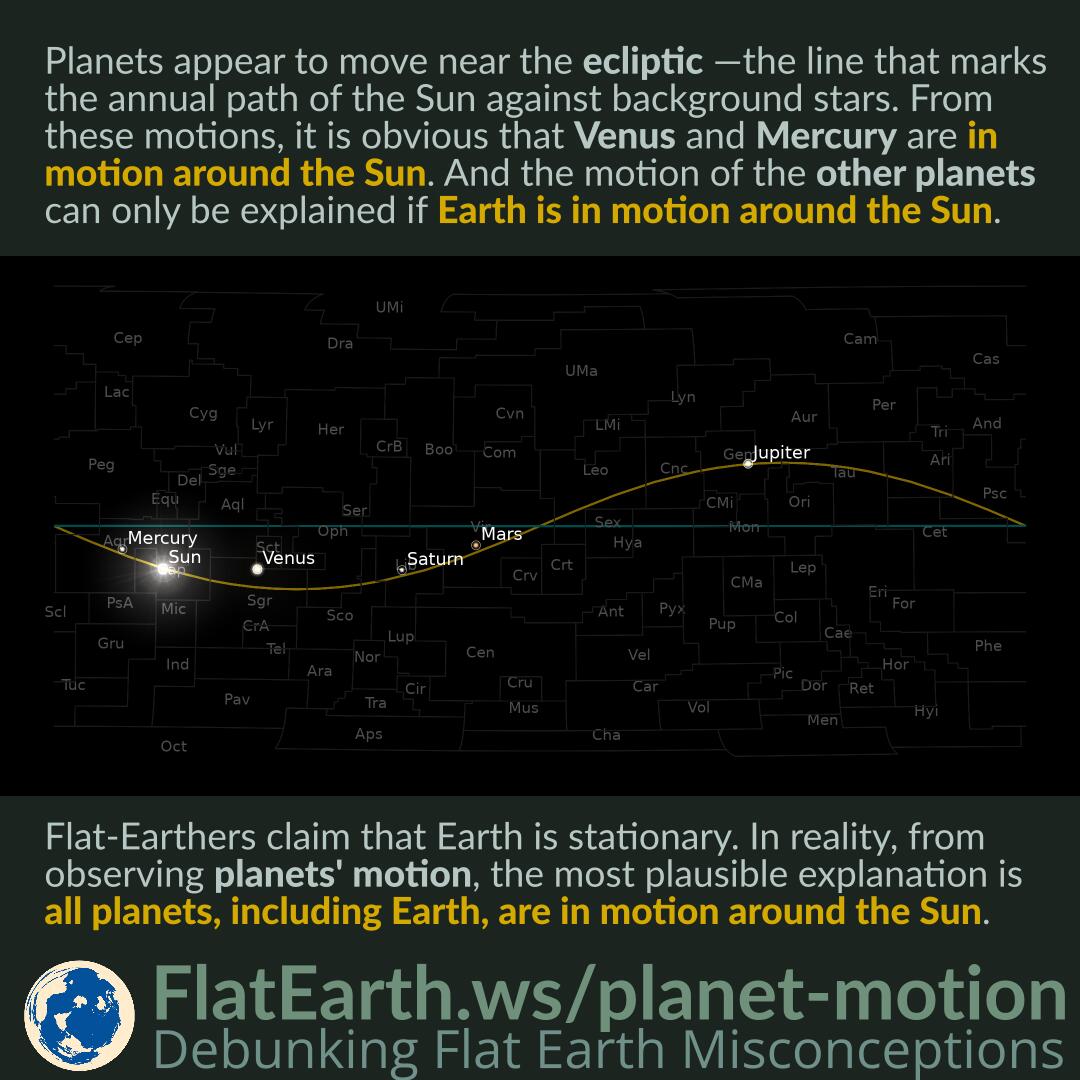Planets appear to move near the ecliptic —the line that marks the annual path of the Sun against background stars. From these motions, it is obvious that Venus and Mercury are in motion around the Sun. And the motion of the other planets can only be explained if Earth is in motion around the Sun.
Flat-Earthers claim that Earth is stationary. In reality, from observing the planets’ motion, the most plausible explanation is that all planets, including Earth, are in motion around the Sun.





